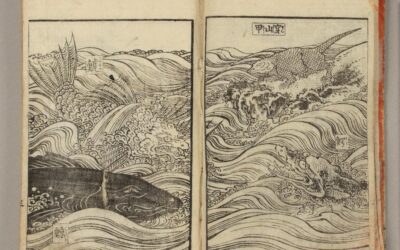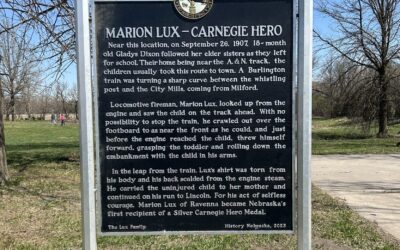In 1929 a group of local men visited every Black household in North Platte, telling people to get out of town by 3 p.m.
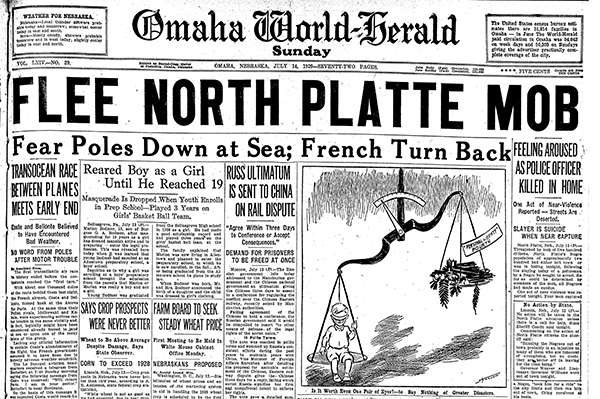
By David L. Bristow, Editor
July 30, 2020
Someone called us out on Twitter, now X, about an article we published in 1979….
No, wait. This is worth your time. Yes, people complain about everything on social media, but sometimes they have a point. Reading history with a critical eye is part of thinking like a historian.
Consider this story:
In 1929 a Black business owner named Louis Seeman fatally shot a North Platte police officer while resisting arrest. Soon a group of police, firemen, and National Guardsmen surrounded the house where Seeman was hiding. They threw flaming rags into the house to smoke him out of the attic, and then found Seeman hiding in a crawlspace under the ground floor. They claimed that Seeman shot himself when he was discovered.
Later that day a group of local men visited every Black household in North Platte, telling people to get out of town by 3 p.m. The city’s Black residents fled, most with only the clothes on their back. Outside media called it the North Platte Race Riot.
But recently, when University of Nebraska-Lincoln sociology PhD student Grace Kelly read a 1979 Nebraska History article about the incident, she objected to the historian’s interpretation in this Twitter thread:
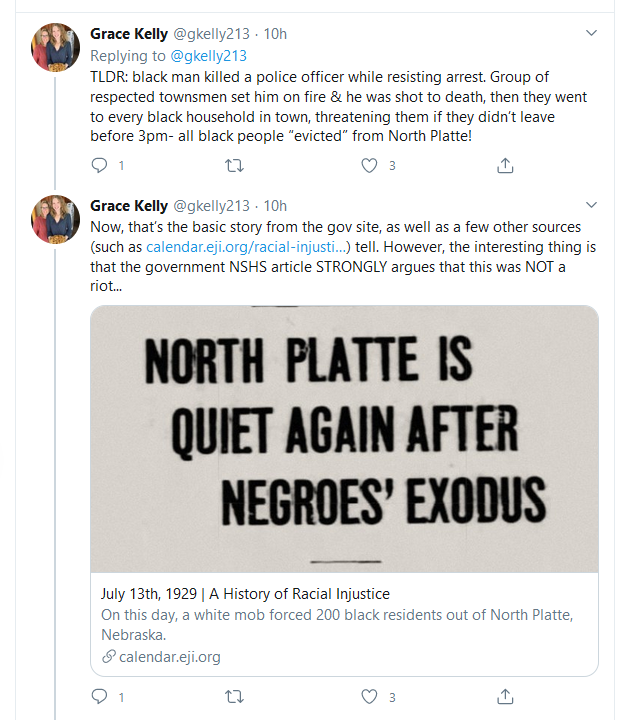
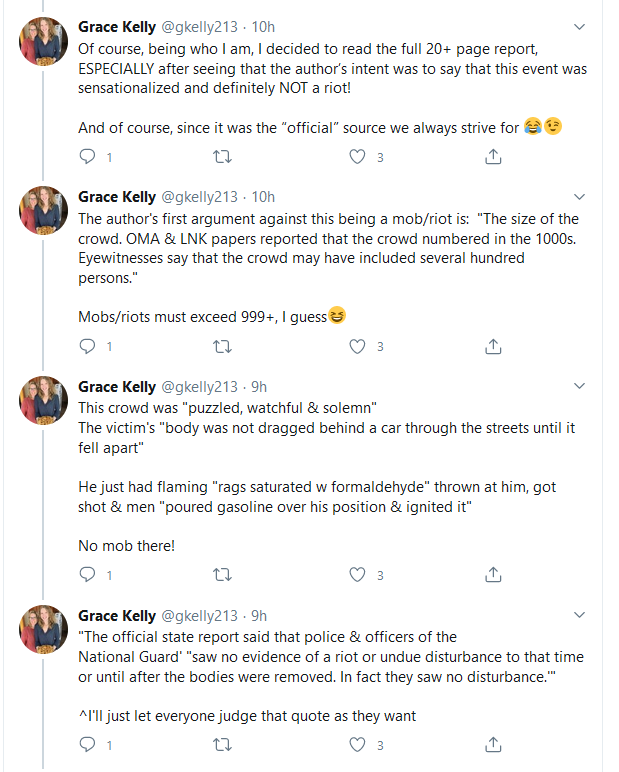
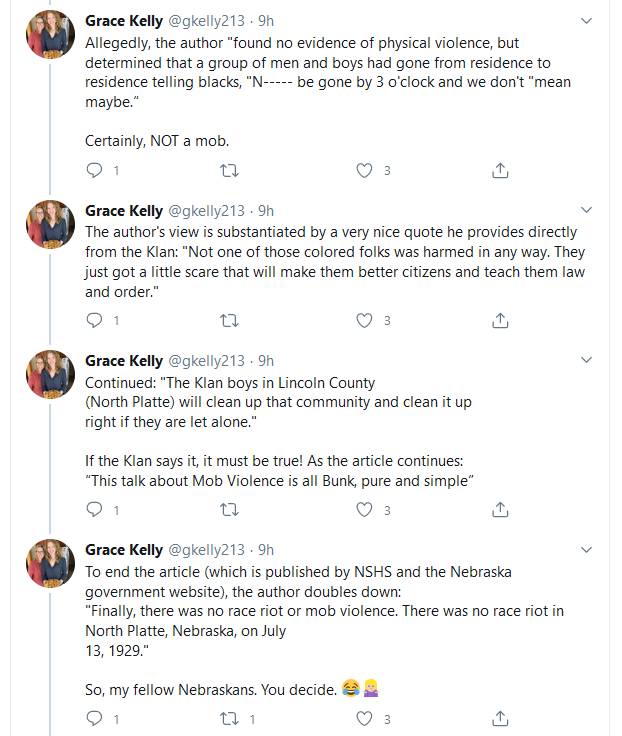

Kelly tagged History Nebraska in another tweet, suggesting that we publish something new on the subject. “There is TONS of great info in the article—but the whole slant is to PROVE it was NOT a riot,” she wrote.
* * *
What’s going on here? Why did a historian make this particular argument?
First, let’s talk about point of view.
Some people say that historians should present “just the facts.” Readers don’t necessarily care about the author’s opinions. They want to make up their own minds.
But history always involves some degree of interpretation. The historian has to select which stories to tell, which details to cite, and then structure those details into a coherent narrative—a subjective process that involves countless interpretive choices.
That doesn’t mean anything goes. We judge works of history by how well they use sources and how plausibly they interpret them. But the savvy reader knows that every historian—no matter how much they try to be fair and objective—has a point of view. Savvy readers treat historical writing less like an authoritative text and more like a conversation with an author. They check endnotes and ask questions.
So what is this article’s point of view? The author is a history graduate student who went on to become an attorney. He values precise, legalistic definitions. He distinguishes “acts of force” from “acts of violence,” and defines a riot as an “offense against the public order involving three or more people and the use of violence, however slight.” He then argues that North Platte’s Black residents left town after a group of men told them to get out of town by 3 p.m., but that there was no physical violence against them.
“This interpretation is by no means intended to lessen the gravity of what did occur,” the author writes, “but it is a clarification of what has become a distorted view of the incident, a view that originated at least partially in sensationalized newspaper stories….”
In 1976 the author interviewed eleven surviving witnesses. The witnesses, White and Black, reported no acts of violence after Seeman’s death. In the author’s judgment, this combined testimony 47 years later is more reliable than the 1929 stories written by out-of-town reporters. Near the end of the article, he writes:
“There is no evidence of any real violence to North Platte’s black population, but there were implied threats. These threats were themselves deplorable.”
The author main goals are to establish what happened and to decide how we should label the event. He titles his article “North Platte Racial Incident: Black-White Confrontation, 1929.”
Kelly’s tweets imply that the author agrees with the Klan’s assessment (“just a little scare that will make them better citizens”), but in fact the author says he doesn’t want to “lessen the gravity” of what he calls a “deplorable” incident.
But the author goes on to say something that I’ll come back to later. Explaining that the action appears to have been spontaneous, he concludes that it “was not the result of any long-term or deeply-rooted race hatred…” (emphasis added).

Omaha World-Herald, July 16, 1929.
* * *
This brings us to an important lesson about “difficult history.” Notice that Kelly doesn’t dispute the author’s factual claims. She objects to his interpretation.
We’re hearing a lot these days about America’s racial history. Sometimes people argue about the facts, but most disputes are about interpretation. How much weight should we give to some parts of the story over others?
Consider the North Platte incident. From the perspective of 1929 city leaders, the main story was that big-city newspapers unfairly damaged the town’s reputation with exaggerated stories. No one was hurt, except a man who murdered a police officer, and Black residents soon returned to their homes. In this view, the accuracy of words such as “riot,” “mob,” and “violence” are of primary importance.
But from the (presumed) perspective of North Platte’s Black residents, the main issue was “Am I going to be lynched?” and “Will North Platte be another Omaha, another Tulsa, another Rosewood?” From this perspective, it was irrelevant whether the White men going door to door were properly a “mob” that was “rioting.” People fled because they knew they could be killed with impunity.
Notice that the author makes no mention of any Black resident calling the police for help—because why would they? Black people were bound by the law but not protected by it. The opposite was true for the White people who threatened them. Afterwards some of the White men boasted that no jury would convict them, and sure enough, the handful who faced misdemeanor charges were acquitted after a jury deliberated all of ten minutes.
To me, what is striking about the article is not that it justifies what happened—it doesn’t—but that despite being grounded in thorough research and attention to detail, it assumes the priorities and interpretive framework of North Platte’s White leadership. This shapes the entire narrative, including the author’s astonishing conclusion that the incident was “not the result of any long-term or deeply-rooted race hatred.”
* * *
In her tweets, Grace Kelly emphasizes that History Nebraska is a government agency and an official source of state history. In multiple senses, we own that 1979 article.
This is something we think about too. We’ve been publishing Nebraska History magazine for more than 100 years, and we’re gradually posting back issues online as free PDFs. It’s not an empty boast to call it the best single source of Nebraska history anywhere online. But each article is written from somebody’s limited perspective, and the passage of time has a way of revealing our blind spots.
The 1979 article remains online, now linked to this post. The next part is up to you. Read the article. What do you make of the author’s interpretation? Do you agree with Kelly’s summary and critique? Are my comments helpful, or do I miss the mark? How might your own identity and background shape your interpretation of events? Who else might have a different perspective?


